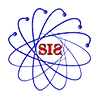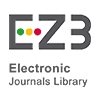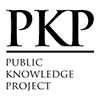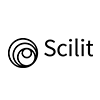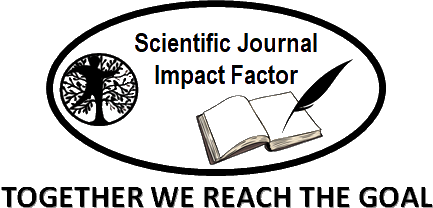Winckelmann's Dynamic Harmony Between Nature and Reason
Abstract
For Winckelmann, harmony is one of the most important characteristics of the essence of beauty, which is manifested in the unity of form and natural transition. On the part of the viewer, harmony triggers a pleasant emotional response as an external manifestation of the harmonious presentation of order. Although the flaws and exaggerations of human nature hinder harmony, it is precisely because of these that a higher level of harmony is achieved. This paper attempts to show how a dynamic process can be realised in a static description of harmony, so that the viewer can achieve a deeper aesthetic experience, based on an analysis of the dynamic harmony implied in the text. Therefore, this paper considers in depth the connection between harmony and emotion, and explores how the beauty of harmony is deeply integrated with emotional experience in a dynamic sense. Finally, through the perspective of the evolution of the synergy and beauty between nature and reason, it is discussed in what sense Winckelmann's interpretation of ancient Greek art expresses dynamic harmony.
Keywords
Full Text:
PDFReferences
Baur, M. (1998). 4. Winckelmann and Hegel on the Imitation of the Greeks. In M. Baur & J. Russon (Eds.), Hegel and the Tradition (pp. 93–110). University of Toronto Press. https://doi.org/10.3138/9781442675674-007
Brandes, P. (2017). Beauty as the Middle Between Two Extremes: Encountering the Aesthetics of Equilibrium in Winckelmann’s Theory of Art. The Germanic Review: Literature, Culture, Theory, 92(2), 143–154. https://doi.org/10.1080/00168890.2017.1297611
Duffy, M. H. (1991). Style and truth in the Neoclassical art theory and criticism of Anton Raphael Mengs and Johann Winckelmann. University of Illinois at Urbana-Champaign. https://search.proquest.com/openview/d649255796589f2e808a96ca2e5af53e/1?pq-origsite=gscholar&cbl=18750&diss=y
Evangelista, S., & Harloe, K. (2017). Pater’s ‘Winckelmann’: Aesthetic criticism and classical reception. https://centaur.reading.ac.uk/59199/3/Evangelista%20and%20Harloe%20%2528revised%20final%2529.pdf
Fitzgerald, W. (2022). The living death of antiquity: Neoclassical aesthetics. Oxford University Press. https://www.google.com/books?hl=zh-CN&lr=&id=6QZZEAAAQBAJ&oi=fnd&pg=PP1&dq=Winckelmann+neoclassicism&ots=4zNDOPFJkC&sig=a9_KIGG4dZ5LhRhixP3-KoNHlKQ
Flavell, M. K. (1979). Winckelmann and the German Enlightenment: On the Recovery and Uses of the past. The Modern Language Review, 74(1), 79–96.
Harloe, K. (2018). Winckelmania: Hellenomania between ideal and experience. In Hellenomania (pp. 40–55). Routledge. https://www.taylorfrancis.com/chapters/edit/10.4324/9781315277370-3/winckelmania-hellenomania-ideal-experience-katherine-harloe
North, J. H. (2013). Winckelmann’s “Philosophy of Art”: A Prelude to German Classicism. Cambridge Scholars Publishing. https://www.google.com/books?hl=zh-CN&lr=&id=1r0wBwAAQBAJ&oi=fnd&pg=PP6&dq=Winckelmann+neoclassicism&ots=n0s5aAfzxs&sig=32Vo22CQllCWRf028PUXCNt7mIA
Piasecki, H. C. (2018). The Propagation and Proliferation of the Greek Ideal: From Antiquity to Winckelmann. https://digitalcommons.bard.edu/cgi/viewcontent.cgi?article=1350&context=senproj_s2018
Shusterman, R. (2018). Winckelmann on Taste: A Somaesthetic Perspective. The Journal of Aesthetics and Art Criticism, 76(2), 175–186.
Shusterman, R. (2019). Body and Society in Winckelmann’s Theory of Artistic Taste. AION, Series Minor, 1, 14–28.
Smith, A. (2021). Winckelmann’s influence on the Neoclassical reception of Greek vases. Journal of Art Historiography, 25. https://centaur.reading.ac.uk/100626/
Voutsaki, S., & Cartledge, P. (2017). Ancient Monuments and Modern Identities. Taylor & Francis. https://api.taylorfrancis.com/content/books/mono/download?identifierName=doi&identifierValue=10.4324/9781315513454&type=googlepdf
Winckelmann, J. J. (2006). History of the Art of Antiquity. Getty Publications. https://www.google.com/books?hl=zh-CN&lr=&id=mbWo3EaeGPEC&oi=fnd&pg=PR9&dq=Winckelmann&ots=-u0vKTmTqS&sig=5Tpeib6RpDwgqeJ2RIuwo8TJX-k
DOI: http://dx.doi.org/10.18415/ijmmu.v12i7.7066
Refbacks
- There are currently no refbacks.
Copyright (c) 2025 International Journal of Multicultural and Multireligious Understanding

This work is licensed under a Creative Commons Attribution-NonCommercial-NoDerivatives 4.0 International License.
https://ijmmu.com
editor@ijmmu.com
facebook.com/ijmmu
Copyright © 2014-2018 IJMMU. All rights reserved.










